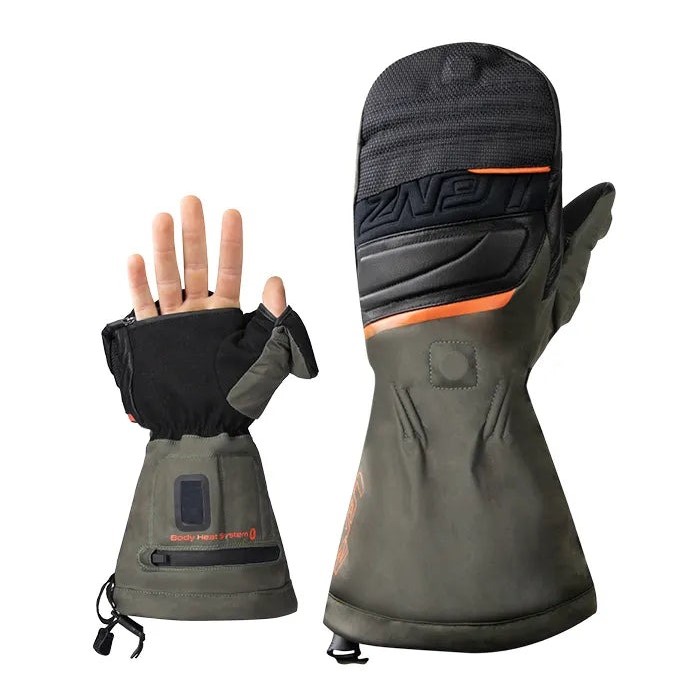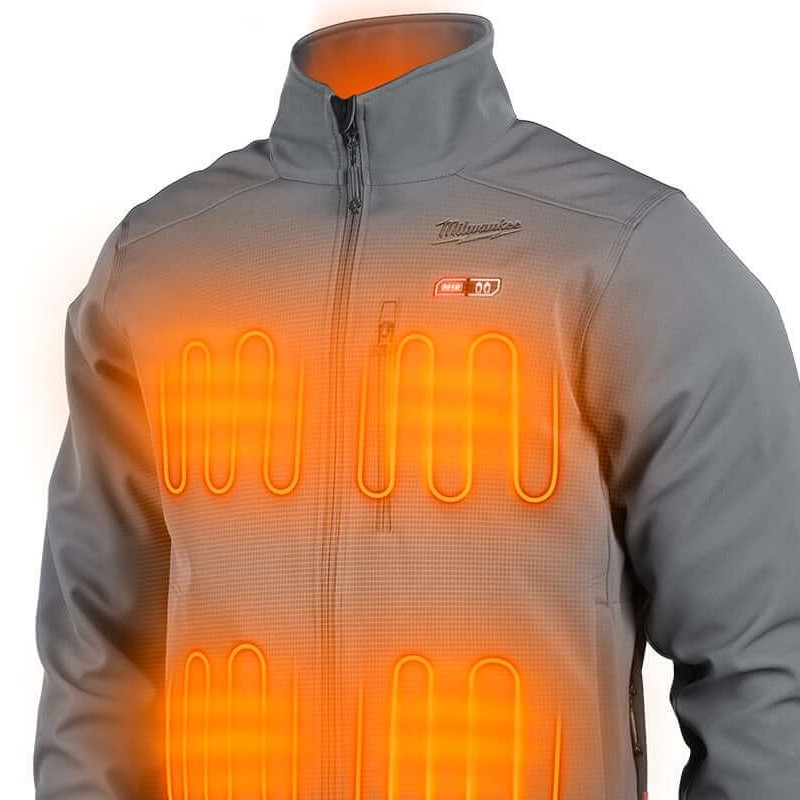The Evolution of Heated Outerwear
As fashion marries function, heated outerwear has emerged as a game-changer for winter comfort. This evolution didn’t happen overnight. It grew over years of innovation and technology adapting to consumers’ needs.
The Technology Behind Heated Clothing
The core of heated outerwear lies in its cutting-edge technology. Thin, flexible heating elements embed within the fabric. They connect to a battery to generate warmth. Advanced models feature carbon fiber elements, known for their durability. Convenience and safety are key, so these garments include temperature control. Most come with several heat settings, ranging from mild to toasty. Users can adjust the warmth with the push of a button.
From Niche to Mainstream: How Heated Apparel Became Popular
Heated outerwear began as a niche product for outdoor professionals and enthusiasts. However, as technology improved, the costs came down. This made them accessible to the average consumer. The pivotal moment for heated apparel was when fashion and utility fused. This powerful combination brought heated jackets, gloves, and more into the mainstream market. They’re not just for skiers or mountaineers anymore. Everyone from city dwellers to early morning dog walkers now embraces heated outerwear. Its popularity shows no sign of waning as it becomes an essential part of the modern winter wardrobe.
Types of Heated Outerwear

As heated outerwear gains popularity, the variety expands to suit different needs and preferences.
Heated Jackets and Coats
Heated jackets and coats are staples in the heated clothing line. These come with built-in heating elements, focused on the back and chest areas. They keep your core warm. Designs range from lightweight to heavy-duty, ensuring there’s a style for everyone. They’re ideal for daily wear or outdoor activities.
Heated Gloves and Footwear
Cold hands and feet are no longer an issue with heated gloves and footwear. These items use battery power to keep extremities warm. Heated gloves have elements placed around fingers and palms. This allows for flexibility and warmth. Similarly, heated insoles can slip into shoes or boots, providing continuous heat.
Heated Pants and Base Layers
For full-body comfort, heated pants and base layers are essential. They offer gentle warmth to legs and pair well with other heated apparel. Thermal fabrics combined with heating technology maintain an optimal body temperature. Whether you’re out on the slopes or taking a chilly morning walk, they provide an extra layer of warmth.
Key Features of Heated Clothing
Heated outerwear stands out with its unique features. These key characteristics make the clothing both functional and efficient in cold weather. Let’s delve into these standout features.
Temperature Control Options
One of the most crucial aspects of heated outerwear is temperature control. Users can adjust their comfort levels with ease. Most heated jackets and base layers come with multiple settings. These range from a gentle warmth to a high heat. This feature makes the clothing versatile. It’s perfect for varying cold conditions. It also lets users save battery power by choosing a lower setting.
Battery Life and Power Sources
The power source is the heart of heated apparel. Batteries need to be both long-lasting and reliable. Today’s heated garments typically use rechargeable lithium-ion batteries. These can provide warmth for several hours. The duration depends on the heat setting selected. Some heated clothing offers the option to use external power banks. This extends the heating capacity, making it ideal for extended outdoor use.
Material and Design Innovations
Heated outerwear is not just about technology; the materials matter too. Modern designs use lightweight, water-resistant fabrics. These provide both comfort and protection. Clothing makers focus on integrating heating elements seamlessly. They aim for a look that’s stylish and a feel that’s non-bulky. Manufacturers also consider flexibility and durability. They often use materials like carbon fiber for heating elements. These can withstand repeated use and still deliver consistent warmth.
Choosing the Right Heated Outerwear

Selecting the right heated outerwear requires careful consideration. Assess your needs based on your climate and activity level to make the best choice.
Considering Weather Conditions
When choosing heated outerwear, consider the conditions you’ll face. For milder winters, a lightweight heated jacket may suffice. In harsher climates, opt for outerwear with higher heat settings and enhanced insulation. Check the maximum temperature each garment offers. Ensure it matches your environment’s demands.
Sizing and Fit Guide
Fit is crucial for maximizing the benefits of heated clothing. A snug fit ensures the heating elements stay close to your body. This maximizes warmth. Choose sizes that accommodate layering without restricting movement. Consult the brand’s sizing chart to find your perfect fit.
Budget and Brand Considerations
Heated outerwear is an investment in comfort. Prices vary based on features and quality. Determine your budget before shopping. Then, compare different brands. Research customer reviews to gauge reliability and performance. Investing in a reputable brand can lead to better quality and durability.
Safety Tips for Using Heated Clothing
Safety is paramount when using any heated outerwear. Here are some essential tips to ensure you use your heated clothing safely.
Understanding the Electrical Components
Heated clothing features electrical components integral to its function. Familiarize yourself with the battery type powering your garment. Always ensure that the battery is correctly installed. Make sure it’s off when you’re not wearing the clothing. Avoid exposure to water while electronic components are active. This prevents any risk of short circuits.
Maintenance and Care for Longevity
To prolong the life of your heated outerwear, regular maintenance is necessary. Always follow the manufacturer’s instructions for care. Only use approved chargers for your garment. Store your heated clothing in a dry, cool place. Check periodically for any wear or damage. This helps maintain both safety and functionality of the clothing.
Future Trends in Heated Apparel

The world of heated outerwear is always evolving. Innovations enhance comfort and convenience for users. Let’s explore what the future holds for this exciting technology.
Advancements in Heating Technology
Heating technology is advancing at a rapid pace. Soon, we may see heated apparel that warms up faster and more evenly. Expect smarter temperature control, possibly managed through a mobile app. We’re likely to encounter more efficient batteries that offer longer life between charges.
Heated outerwear could become even lighter and more flexible. Imagine thin, resilient heating elements that you hardly feel. As tech becomes more compact, expect sleeker designs as well. Heated garments may also start to use solar or kinetic power for eco-friendly warmth.
Sustainability and Eco-Friendly Options
Sustainability is key in fashion’s future, and heated clothing is no exception. We anticipate more heated outerwear made from recycled materials. These garments will not only keep you warm but also help reduce waste.
Eco-friendly practices may extend to the manufacturing process. This includes using renewable energy or reducing carbon footprints. Companies may prioritize repair services to extend product lifespans.
Also, look for heated apparel that incorporates biodegradable elements. This makes disposal less harmful to the environment. We hope to see sustainability scores for heated clothing, guiding consumers in making responsible choices.
As the technology progresses, heated outerwear will continue to change. It will become more effective, stylish, and conscientious. Keep an eye on the latest advancements and sustainable options. Heated outerwear is set to get even better in the years to come.


